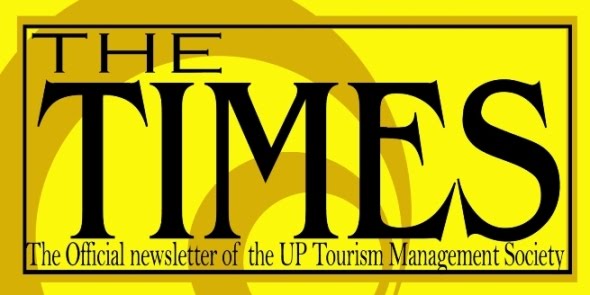Rachel Bautista, Alumna 01
The World Travel & Tourism Council (WTTC) estimates that, from direct and indirect activities combined, the T&T sector now accounts for 9.9 percent of global GDP, 10.9 percent of world exports, and 9.4 percent of world investment.
How much of this was the Philippines’ share?
From a BCG matrix point of view, the Philippines has an abundance of strengths in terms of: 1) Natural Resources 2) Cultural Resources 3) People’s affinity for Tourism 4) Price Competitiveness 5) Ease of access for most International tourists. However, these may not be fully realized into competitive advantages if our biggest weakness is the lack of a strong, unifying framework on how we will develop and promote the country as a premier tourist destination. Tourism Development is not the responsibility of the DOT alone. Because the Travel & Tourism Industry’s scope overlaps with other departments such as DOTC, DENR, DOH, DTI to name a few – all these have to work together. Too often we see that the initiative of one government agency is hampered by conflicting/limiting policies of other agencies. Too often – we lose sight of our ultimate goal – to make the Philippines THE place to visit.
To cite a few examples, the recent shortage of the new Arrival/Departure cards for arriving and departing travellers could be seen as lack of proper planning and execution by a government agency. This is owing to the fact that the Bureau of Immigration issued a memorandum that effective January 1 this year, only the new cards will be accepted for use.
Another example is status of our Air Transport Infrastructure. In 2009 alone, several incidents of power outages at the NAIA T-1, closure of runways at the Caticlan Airport, the lack of appropriate navigational equipment and even the ongoing legal problems concerning T-3 are some of our weak points.
In terms of environmental sustainability, it is sad to note that some of our most popular destinations are threatened by a slow but sure demise due to the lack of proper policies that would foster sustainability. The reality is that short term monetary gains are favoured over modest but long-term financial returns brought about by a sustainable tourism plan. Boracay is a classic example.
How can we attract new investors when it takes us twice as long to start a business (52 working days) compared to countries such as Pakistan, Algeria, Uganda, Serbia, and Montenegro. It takes us three times longer compared to UAE. We have so much more to offer as a destination compared to these countries – why can’t we streamline the process for investors?
These are but a few examples that signal the need for a thorough look into how we manage Tourism. Our ranking in areas such as Prioritization of Travel and Tourism (#59), Business Impact Rules on Foreign Direct Investment (#97), Transparency of Government Policy making (#85).
With the National Elections only a few months away – this would be a good time to check the candidates’ platforms on Travel & Tourism. We should look at what their specific plans in terms of the T&T Industry. It would be a shame to see other countries surge ahead not because they have more to offer a tourist in terms of experience and product – but only because the destination is better managed than we are.



2 comments:
With the National Elections only a few months away – this would be a good time to check the candidates’ platforms on Travel & Tourism.
-- definitely. :)
dapat nga pinagtutuunan ng pansin ng government ang travel and tourism sector....hayy....malaki pa nman din ang contribution ng travel and tourism sector sa economy natin at xempre pati na din sa ibang bansa...
Post a Comment